Coat short, rough Litter size 5-10 pups Life span 13 – 15 years | Colour fawn, brindle AKC Working dog Origin Turkey | |
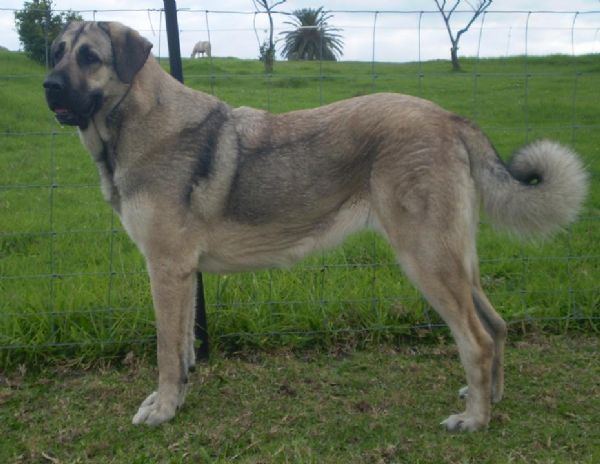 | ||
Other names Karabaş (Blackhead), Anatolian Blackhead (Anadolulu Karabaş), Kangal FCI Group 2, Section 2.2 Molossian: Mountain type #331 Temperament Bold, Steady, Confident, Proud, Intelligent, Independent Height Female: 71–79 cm, Male: 74–81 cm Weight Female: 40–55 kg, Male: 50–65 kg Colors Red Fawn, White, Blue Fawn, Brindle, White & Biscuit, Liver Similar Kangal dog, Akbash dog, Great Pyrenees, Caucasian Shepherd Dog, Kuvasz | ||
The Anatolian Shepherd Dog (Turkish: Anadolu çoban köpeği) is a breed of dog which originated in the Anatolia region of central Turkey. It is rugged, large and very strong, with good sight and hearing that allow it to protect livestock. With its high speed and agility it is able to run down a predator with great efficiency. The Kennel Club of the United Kingdom classifies it as a shepherd dog and Fédération Cynologique Internationale classifies it as molossus/mountain dog #331 (group 2 part 2.2)
Contents
- Anatolian shepherds michael savage on falling in love with the dog breed
- History
- Appearance
- Temperament
- Breed
- Life span
- Health issues
- Use in conservation
- Kangal Dog and Anatolian Shepherd
- Famous Anatolian Shepherd Dogs
- References
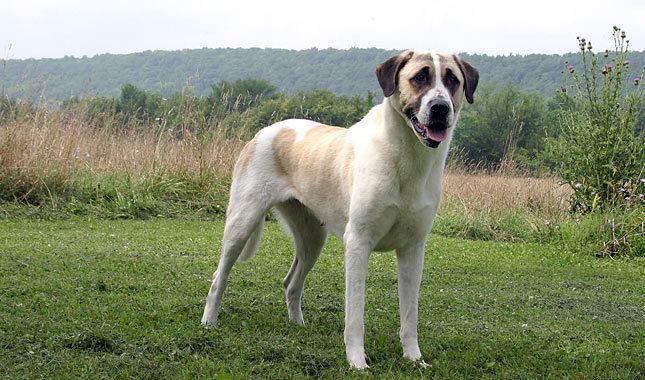
Anatolian shepherds michael savage on falling in love with the dog breed
History
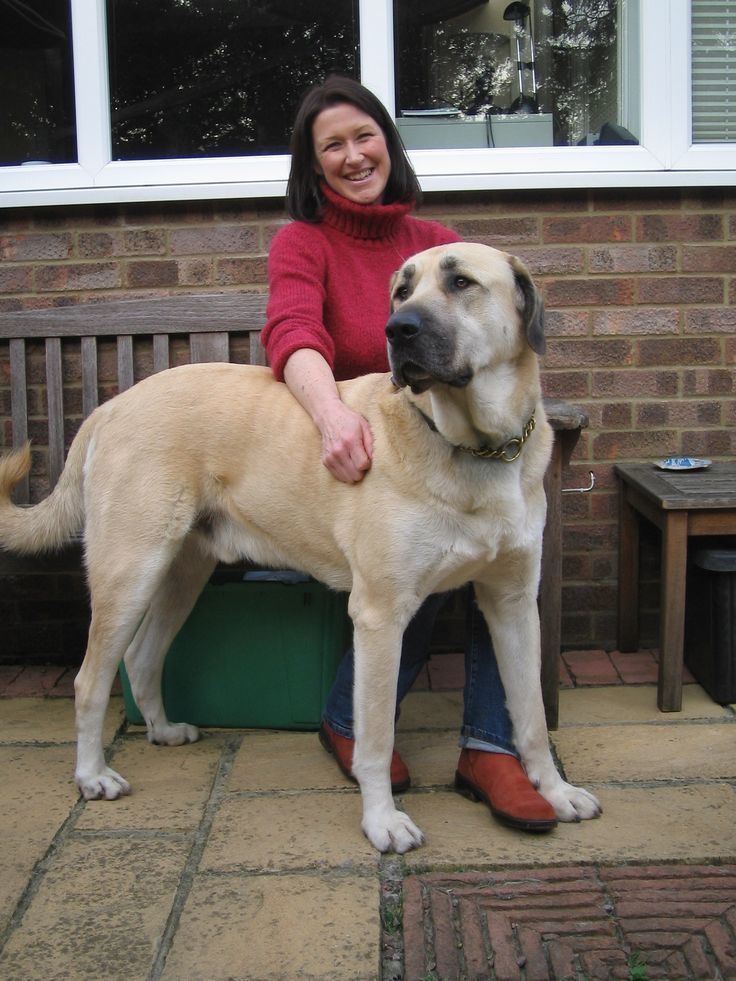
The Karabaş (Blackhead) is descended from ancient livestock guardian dog types that migrated with the transhumance, guarding flocks of sheep from wolves, bears, lions, tigers, leopards, jackals, and even cheetahs. It is probable that dogs of this type existed 6,000 years ago in what is now Turkey. Anatolian Shepherd Dogs are members of a very old breed, probably descended from powerful hunting dogs from Mesopotamia. This mountain dog breed was developed over time to meet a specific set of circumstances. The most formative were climate (very hot, dry summers and very cold winters), lifestyle (sedentary, semi-nomadic and nomadic) and duties (guarding flocks moving great distances on the Central Anatolian Plateau).

In the 1970s, breeders in the West became interested in these dogs and began developing the landrace natural breeds as modern breeds by documenting their descent from particular ancestors and writing breed standards. The Anatolian Shepherd Dog was imported from central Turkey into the United Kingdom by author and archaeologist Charmian Hussey. Although the first pair of dogs brought in by Roger Fanti Sr. were Karabakh (aka Kangal) dogs, other types of dogs were brought in later and cross bred under the definition of an Anatolian Shepherd dog. Many Turkish breeders believe that the Anatolian Shepherd Dog is a cross of the Kangal dog and the Akbash dog.
Appearance
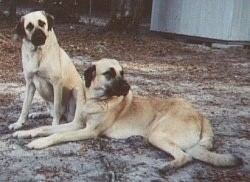
The Anatolian Shepherd dog is a muscular breed. They have thick necks, broad heads, and sturdy bodies. Their lips are tight to their muzzle and they have triangular drop ears. Males stand 660 to 790 mm (26 to 31 inches) tall, females between 680 and 760 mm (27 to 30 inches). They weigh between 40 and 70 kg (90 and 150 pounds), with females on the smaller side and males on the larger side. The coat may be any colour, although most common are white cream, "sesame," and white with large coloured spots that do not cover more than 30% of the body. Known as piebald, these colours may or may not be accompanied by a black mask and/or ears.
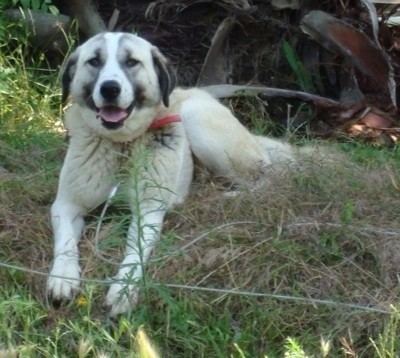
They have a thick double coat that is somewhat wiry, and needs to be brushed 1-2 times a week in warm weather due to excessive shedding. They have very thick hair on their neck to protect their throat. They are seen with docked as well as intact tails. They are a naturally thin animal with a large rib cage and small stomach. They look as if they are heavier than they actually are, due to the thick coat.
Temperament
The Anatolian Shepherd dog was developed to be independent and forceful, responsible for guarding its master's flocks without human assistance or direction. These traits make it challenging as a pet; owners of dogs of this breed must socialize the dogs to turn them into appropriate companions. They are intelligent and can learn quickly but might choose not to obey.
According to Turkish shepherds, three Anatolian Shepherd Dogs are capable of overcoming a pack of wolves and injuring one or two of them. These dogs like to roam, as they were bred to travel with their herd and to leave the herd to go hunt for predators before the predators could attack the flock. Therefore, it is recommended to microchip and tag pets.
The Anatolian Shepherd is not recommended for life in small quarters. They do well with other animals, including cats if they are introduced while still a puppy and have their own space. They mature between 18–30 months. Due to their history, both puppies and adults seem to have little interest in fetching. Rather, they prefer to run and sometimes swim.
Presence of some Anatolian shepherd genes in Alaskan huskies positively correlates with husky work ethic.
Breed
There is some discussion about whether the Anatolian Shepherd is a distinct breed, or a general name for different types of shepherd dogs in Anatolia that look alike (such as the Kangal, which is used as a synonym for the Anatolian Shepherd and has the same 'Blackhead' -karabas- nickname). This view accepts the name Anatolian Shepherd as a general name for breeds such as the Kangal dog, Akbash dog and the Aksaray Malaklisi dog. Recognition of the Kangal as a different breed than the Anatolian Shepherd was retracted in Australia.
Life span
There appears to be only one health survey of Anatolian Shepherds, done in 2004 by the UK Kennel Club. The median life span for the 23 deceased dogs (a small sample size) in the survey was 10.75 years. This is 3–4 years longer than other breeds of their size, which have median longevities of 6–8 years. The leading causes of death of the dogs in the survey were cancer (22%), "combinations" (17%), cardiac (13%), and old age (13%).
Health issues
Based on a small sample of 24 still-living dogs, the most common health issues cited by owners were dermatologic, musculoskeletal, and lipomas. Entropion and canine hip dysplasia are sometimes seen in the breed. Eyes and hips should be tested before breeding.
Use in conservation
Anatolian Shepherd dogs are used by Dr. Laurie Marker and the Cheetah Conservation Fund in their ongoing efforts to prevent livestock-hunting cheetahs being killed by farmers.
These dogs are bred and then given to the farmers to use in protecting and guarding their livestock from cheetah attacks. The dogs are an effective, non-lethal discouragement that prevents the cheetahs from taking livestock. The incentive for farmers to preemptively shoot the cheetahs is thus removed, and the cheetahs then concentrate their hunting on wild game.
Kangal Dog and Anatolian Shepherd
The UK Kennel Club has announced it is to recognise the Kangal Dog as a breed with effect from July 2013. It also stated that dogs currently registered as Anatolian Shepherd Dogs may be eligible (where appropriate) to be recorded as Turkish Kangal Dogs instead.
As of 1 January 2012, the Australian National Kennel Council no longer recognises the ANKC Kangal as being a separate breed from the ANKC Anatolian Shepherd.
Famous Anatolian Shepherd Dogs
Duke; animal ambassador at the San Diego Zoo.
